Introduction
We all know that the cafeteria is the beating heart of the school. But it’s vital to understand that the meals given there are more than just food; they’re an essential part of the daily routine. Yes, beneath the hustle and bustle lies a mystery and revelation about what ends on those platters.
Confused? Alright, tell us. Have you ever wondered how your child’s lunch gets from farm to fork or the secrets to those iconic cafeteria recipes? Never? Learn today!
Whether you’re a parent concerned about your child’s nutrition or a dedicated cafeteria worker striving to serve high-quality meals, this blog is your key to solving the puzzles and learning the real stories behind those iconic cafeteria lunches.
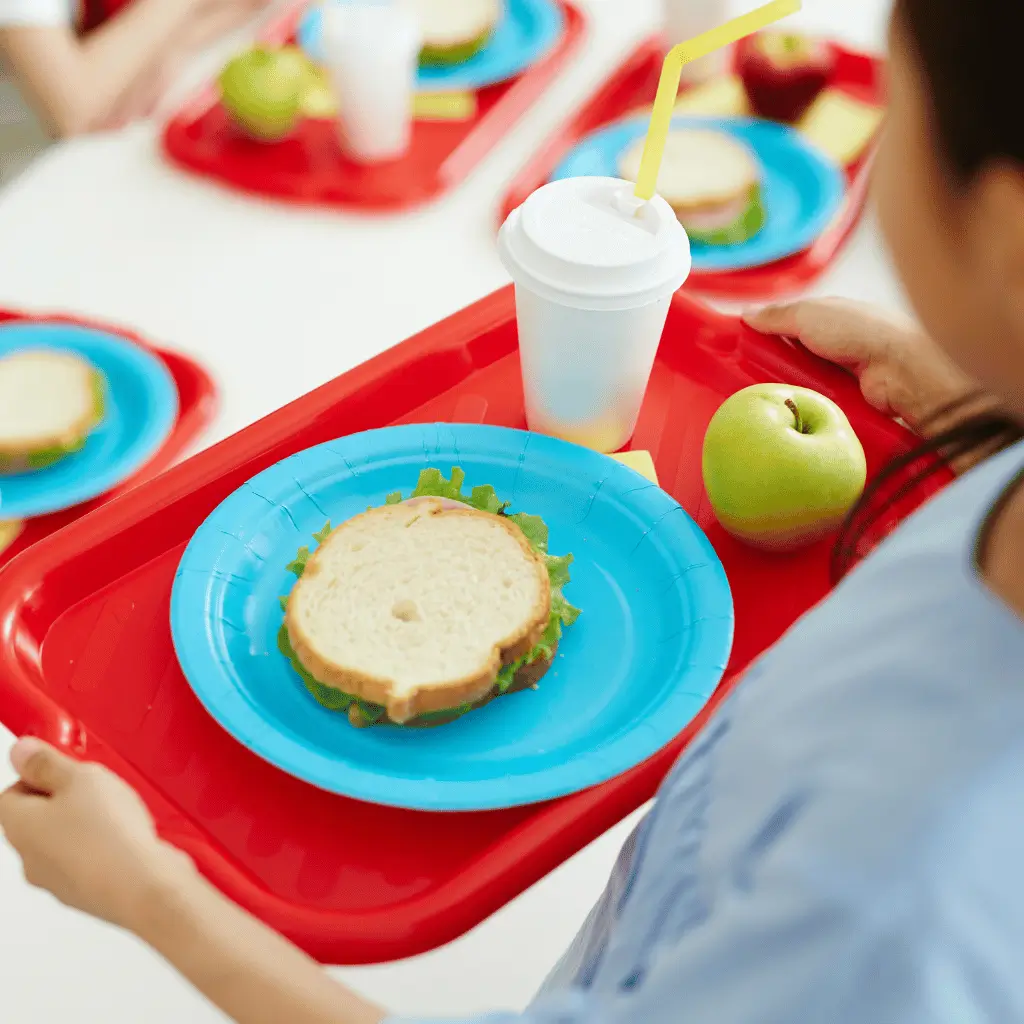
Facts About School Cafeteria Food
School cafeteria food is more than just about what’s on the plate; it’s a whole journey with stories at every step. Think about it: where does that juicy apple or crispy salad leaf come from? How did it get to the school? It’s quite a travel. This fascinating web connects farmers, distributors, and even that friendly lunch lady.
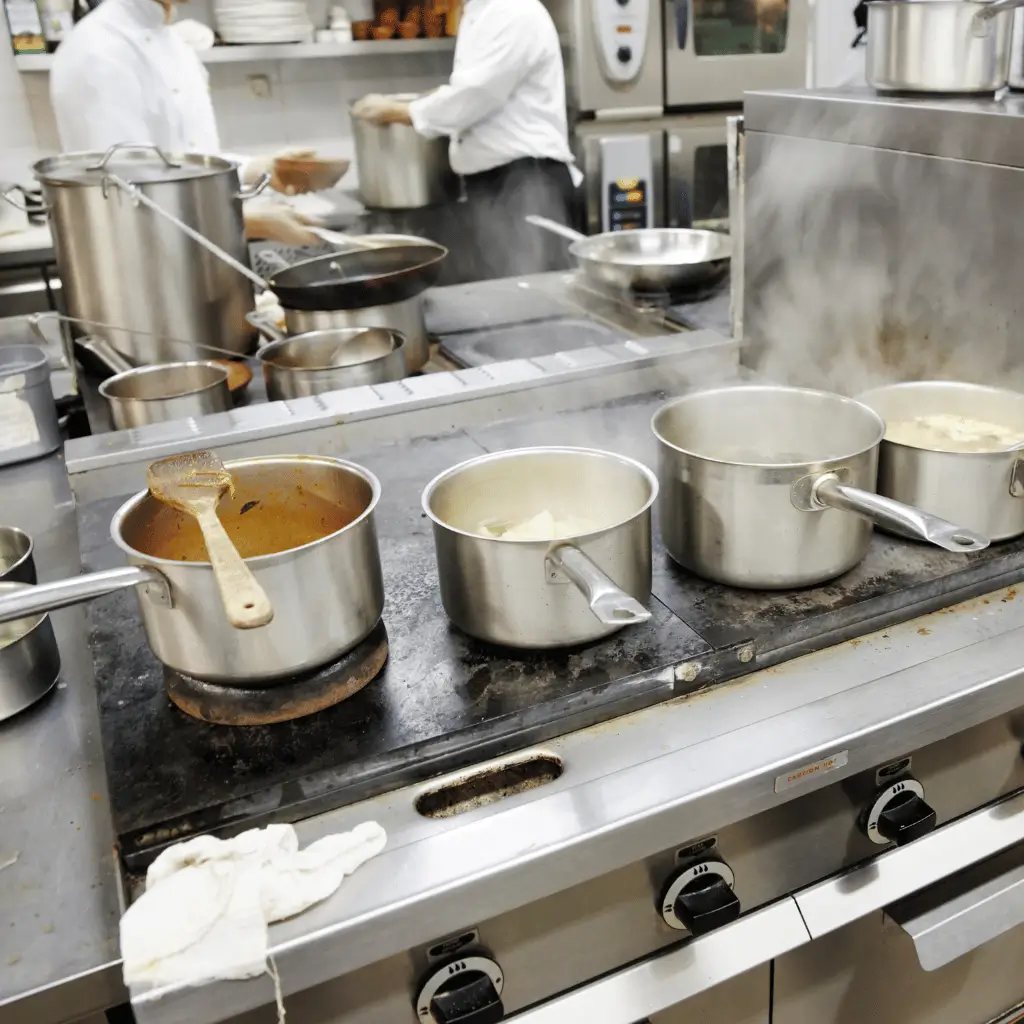
Then there’s the process of making it in school. Have you ever wondered how they cook for hundreds of hungry students daily? And let’s remember consumption rates and their impact on health and learning. It’s all interconnected, from the lunch programs that support students in need to the ratios of veggies to pizza slices.
So, school lunch isn’t just a meal. It’s a whole deck woven with community, nutrition, and care threads. Let’s dive into these facts and figures together and learn the behind-the-scenes.
Suggested reading → How to Improve School Cafeteria Food.
FACT NO. 1 — General School Lunch Facts
Let’s begin with general school cafeteria food facts.
- Over 30 million students in the US can’t afford their school meals, with each owing about $190 yearly, totaling $265 million in student lunch debt annually.
- About 75% of students have a school meal daily, but 27% don’t. Additionally, almost half of those who have meals daily sometimes skip them.
- A survey found that some kids need clarification about food, such as bread from animals and cheese from plants.
- Nearly 1 in 5 American children live in homes without enough food.
- In 2019, the National School Lunch Program provided almost 22 million children with free or low-cost lunches daily, and the School Breakfast Program gave over 12 million children free or low-cost breakfasts daily.
- School meals are crucial for students’ academic success. Those who have breakfast at school perform better on tests and attend school more regularly.
- Despite challenges like bus schedules and early classes, schools are finding creative ways to increase breakfast participation, like grab-and-go options and serving breakfast in classrooms.
- During the 2020–2021 school year, nearly 20 million children participated in the National School Lunch Program, almost all receiving free or reduced-price lunches.
- A study found that American schools squander around 530,000 tons of food per year, equivalent to 39 pounds of food waste and 29 cartons of milk per student, at a total expense of $1.7 billion globally.
- The government reimburses schools for each free or reduced-price lunch served, with additional reimbursement for schools with high rates of free or reduced-price lunches.
Suggested reading → 5 Ways to Reduce Food Waste in Schools.
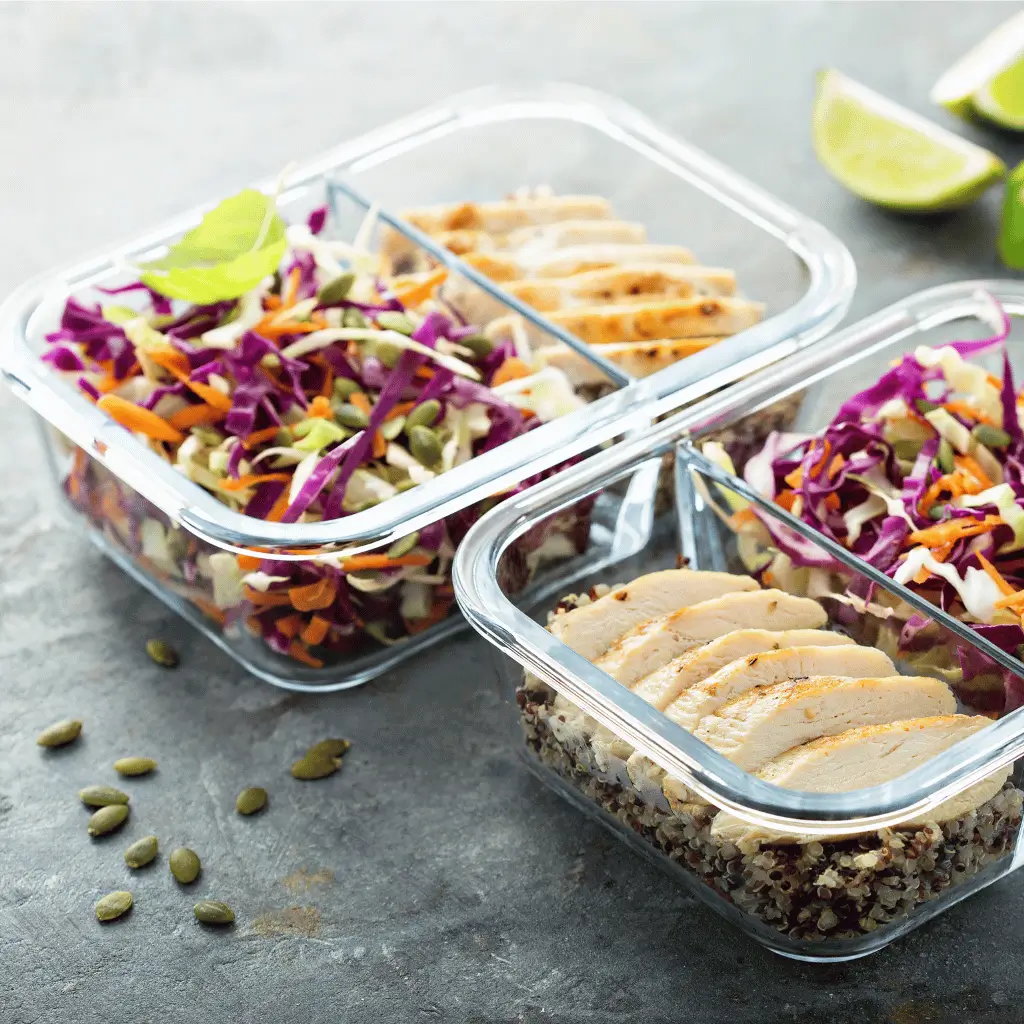
FACT NO. 2 — Supply Chain of School Food
The supply chain is a crucial yet complex system in school cafeteria food. Did you know that family farms, comprising a whopping 80% of global food production, are the bedrock of this supply chain? This statistic highlights the significant role small-scale agriculture plays in feeding the world.
Moreover, it’s fascinating that about 1/3 of school food authorities (SFAs) manage edible gardens, providing students with hands-on experience cultivating food. These gardens serve multiple purposes, including educating students about food origins, inspiring careers in agriculture, and even supplementing school meals with fresh produce.

However, despite these efforts, challenges persist. SFAs frequently encounter unforeseen cancellations of food contracts, unexpected substitutions, and fluctuating prices, all of which disrupt the smooth flow of the supply chain.
Nevertheless, there’s a concerted effort to address these challenges. The USDA collaborates closely with state agencies, SFAs, and the food industry to identify solutions and consistently provide students with nutritious meals. Additionally, the investment of approximately $1.26 billion in local farm food and crops is studied, underscoring a growing emphasis on supporting regional agriculture within school food programs, promoting sustainability and community resilience.
FACT NO. 3 — Economic Challenges
School lunch programs are struggling with money because food and worker costs are increasing, and the exceptional help from the pandemic is ending. Recent studies reveal:
- Almost all school lunch management (99.3%) say paying for everything is hard.
- 83.9% out of 100% think arranging healthy food for kids is going to be a big problem, followed by the issue of finding enough workers., which
- A few percent, around 25-30 percent, think the money they get from the government is enough to pay for lunch.
- Around 91.6% are concerned about how their lunch program will work in the next three years.
The turnaround also indicates that school management needs help incorporating foods into the menu, which may not increase prices. This big group that looks after school lunches say getting more government money is essential to pay for everything, make better menus, and find and keep good workers. Without additional support, meal program deficits could impact education budgets, limiting resources for teachers, textbooks, and technology.
FACT NO. 4 — Cost to Make a School Meal
Did you know that the average cost to make a school meal varies across grade levels?

- Elementary Schools: According to a survey of 57,215 elementary schools, the average lunch price for a school meal is $2.75.
- Middle Schools: From a survey of 17,114 middle schools, the average lunch price to make a school meal is slightly higher at $3.00.
- High Schools: Similarly, from a survey of 20,328 high schools, the average lunch price remains at $3.05.
- Family Costs: The weekly expense for school meals surpasses $67, considering the cumulative costs, for families with three school-aged children.
- Breakfast: For all grades: $1.75
- The breakdown of costs for producing a school lunch typically includes 44.7% for food, 44.5% for labor/benefits, and 9.5% for other direct costs.
- Additionally, the USDA distributes over $2 billion annually to California for school meal programs, with the state contributing approximately $145 million yearly.
Furthermore…
- Recent data from the Consumer Price Index reveals a significant annual increase in the cost of food at elementary and secondary schools, amounting to a staggering 305% rise from the preceding year.
This increase is primarily attributed to the rising costs of essential food items. For instance, eggs have seen a nearly 60% surge in price, while bread and lunch meats have risen by over 15%. Milk and cheese prices have also spiked by more than 12%.
In response to these escalating costs, approximately 60.5% of school meal program directors have opted to increase meal prices for the current academic year. This is causing financial strain to families and schools alike due to the escalating costs of providing nutritious meals, which are crucial for the well-being of students.
FACT NO. 5 — School Food Ingredients
Have you ever wondered what exactly goes into those school lunches? Let’s look closer at the ingredients and nutrition standards behind these meals.
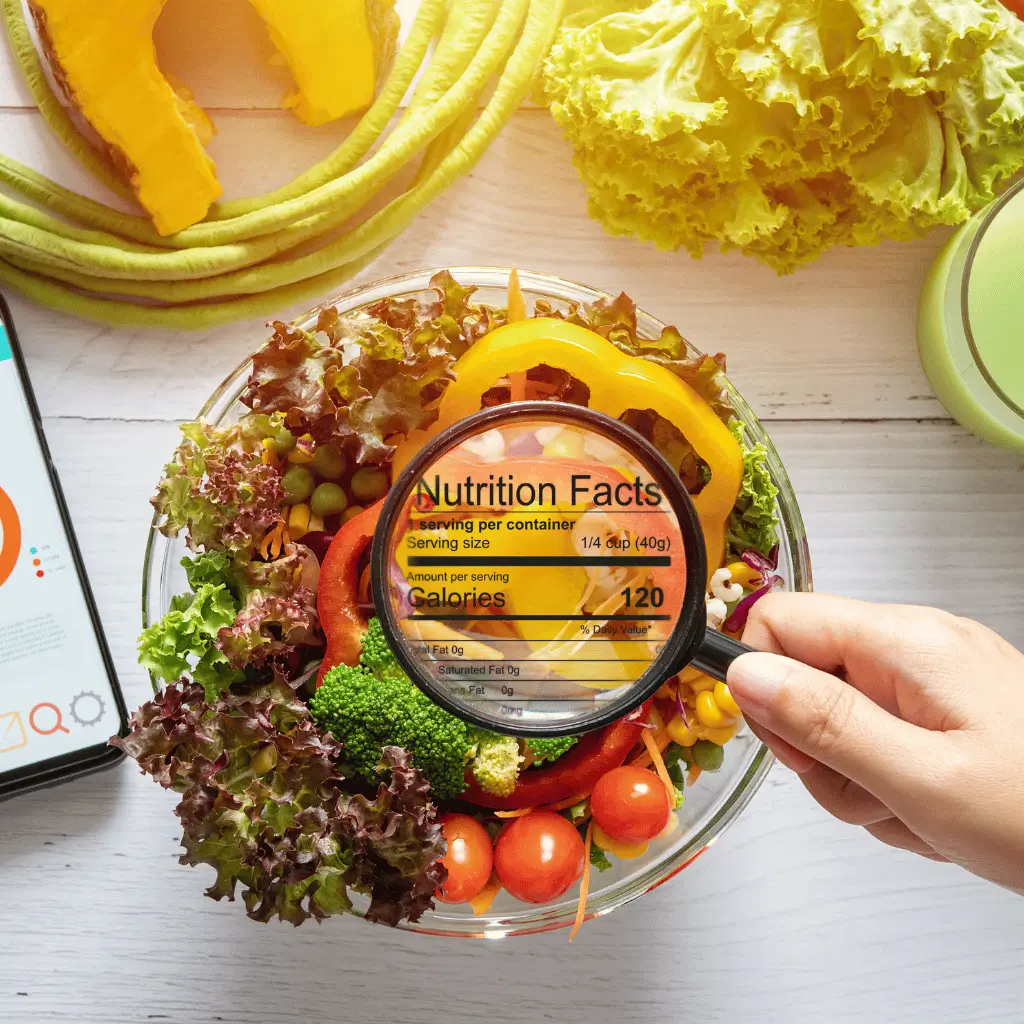
- Key components of school lunches include:
- Milk: Gives a lot of calcium.
- Vegetables: Like carrot sticks, they’re full of vitamins.
- Fruit: From apples to kiwis, they’re usually fresh.
- Grains: Things like bread or rolls are good for kids.
- Protein: Options like chicken or beans for energy.
- Other Commonly used ingredients in school lunches include carrots, peanut butter, chicken, and cheese.
- School meals often include processed foods because they’re cheaper. However, they still have to meet specific nutrition standards the government sets. That means meals must be balanced, with limits on fat and portion sizes tailored to kids’ ages.
- School meals offer great value and convenience for busy parents while ensuring age-appropriate portion sizes.
- The School Fruit and Vegetable Scheme provides free produce to 4–6-year-olds in fully state-funded schools.
- Despite efforts to promote healthier eating, affordability remains a significant barrier to vegetable consumption, particularly among lower-income groups.
- High schools aim to offer meals with approximately 850 calories, prioritizing healthier options.
- Updated standards have led to increased fruit and vegetable consumption among students. Fresh fruits and vegetables are among the most commonly and frequently purchased local food items for school meals.
- Whole grains are incorporated into various school meal items to provide essential B vitamins, minerals, and fiber, promoting satiety and concentration.
- Encouraging healthier food preferences among children is a priority to combat the long-term health consequences of excessive salt consumption.
- Schools have some flexibility in using whole grains until better options are available.
- Schools have to make meals with less salt to keep kids healthy.
FACT NO. 6 — Lunch Programs and Student Welfare
Ensuring students have access to nutritious meals is not just a matter of filling their stomachs; it’s a crucial investment in their health, well-being, and academic success. Across the United States and other countries, various programs provide balanced and affordable meals to students, aiming to address nutritional deficiencies, combat food insecurity, and promote healthy eating habits. Here’s what it entails.
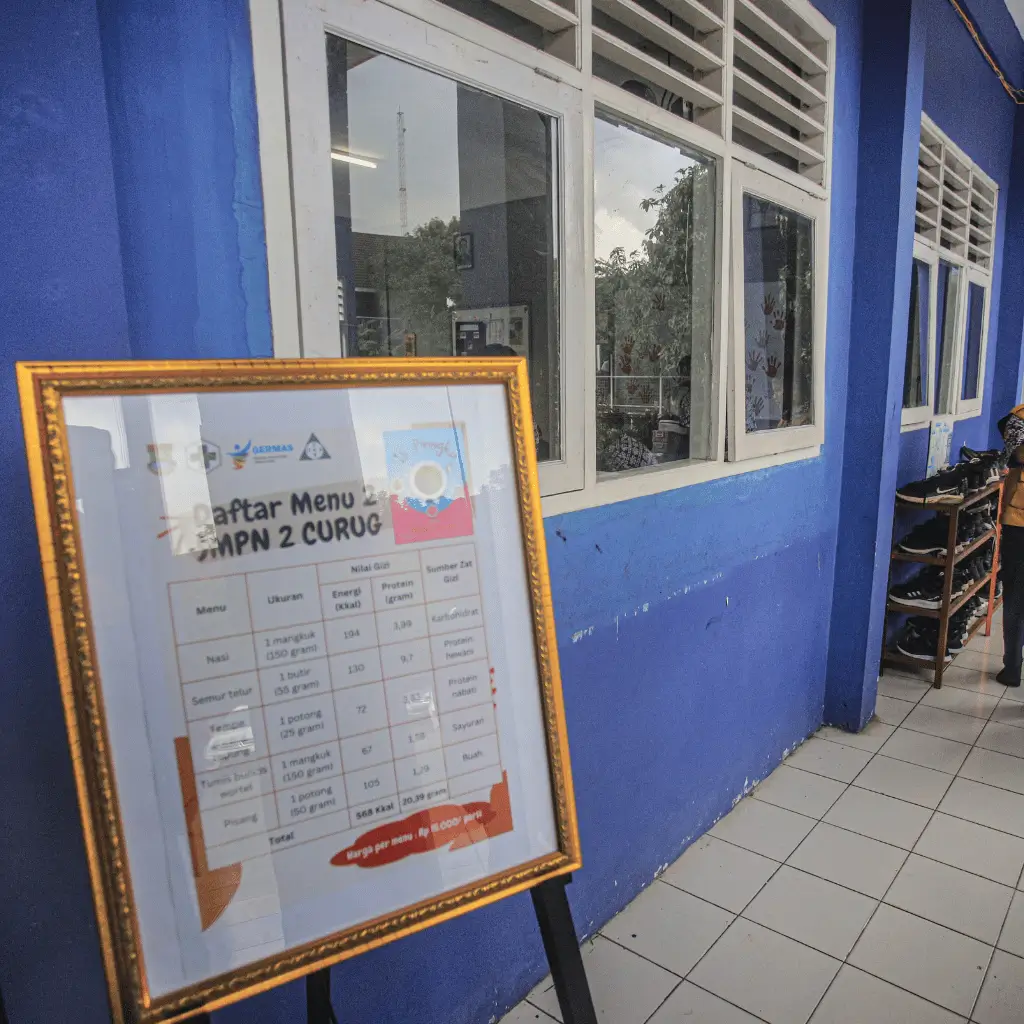

- Since 2012, school lunches and breakfasts have become significantly healthier, with a 41% improvement in lunch nutrition and a 44% improvement in breakfast nutrition. This improvement is measured by mean Healthy Eating Index scores, ensuring meals meet the Dietary Guidelines for Americans.
- The National School Lunch Program NSLP is inclusive, offering nutritious meals to all students regardless of income. Over 95,000 schools and institutions participate in the (NSLP), serving 28.5 million students daily.
- Annually, 4.6 billion lunches are served, 18.9 million free of charge, and 1.1 million at reduced prices. In contrast, NSLP separately incurs an annual federal cost of $17.18 billion, covering reimbursements and commodity costs.
- The School Breakfast Program (SBP) annually costs $5.2 billion in federal reimbursements.
- Portion sizes and calorie counts are tailored to students’ age groups, ensuring adequacy and balance.
- School lunches emphasize balanced nutrition, incorporating vegetables, fruits, low-fat dairy, and whole grains to combat obesity and chronic disease.
- SFAs invest in local foods, with 20 cents of every food dollar spent on local produce.
- Nationwide, there has been a significant increase in spending on locally purchased food, enhancing community connections and supporting local economies.
- Several states, including California, Maine, Minnesota, New Mexico, Colorado, Vermont, Michigan, and Massachusetts, have passed legislation for universal free lunches.
- Efforts are underway in 25 states to expand or introduce similar programs, demonstrating a growing commitment to student welfare.
Learn about → National School Lunch Program – What It Means for Your School Cafeteria.
FACT NO. 7 — Benefits of School Cafeteria Lunch
From bolstering health and academic performance to promoting balanced nutrition and food security, school lunches play a pivotal role in shaping the well-being and success of students across the board. Let’s explore the compelling evidence supporting school meal programs’ positive impact on physical and academic outcomes.


- School lunches contribute to better health and food security, with children who receive on-site meals being more likely to be food-secure and in good health, according to a 2023 study.
- Improved academic performance is evident, as shown by a 2021 report from the Brookings Institution, where math performance notably improved in districts offering schoolwide free meals, particularly among elementary and Hispanic students.
- Reports from the Center for Policy Research at the Maxwell School indicate that universal free meals positively affect English language arts and math test scores without increasing student weight or BMI.
- Economists estimate that receiving free or reduced-price school lunches reduces obesity rates by at least 17 percent and poor health by at least 29 percent, based on national data.
- School lunches are cost-effective, with nutritious meals provided for less than $0.40 per day for eligible students, and often cheaper than packed meals from home for others.
- Nutritious school meals support academic success by providing students with adequate fuel to stay energized and focused throughout the day, reducing the likelihood of losing interest in schoolwork.
- < UNK> Various studies demonstrate that balanced nutrition from school lunches contributes to overall student health and academic achievement by improving diets and combating hunger.
- School lunches offer a variety of colorful fruits and vegetables, ensuring students receive a diverse range of nutrients essential for their development.
- Portion sizes are designed to meet 1/3 of the recommended daily calorie allowance, with no limit on second helpings of fruits or vegetables. This allows students to fill up on a variety of nutritious foods.
FACT NO. 8 — Obesity Issues
Addressing the complexities surrounding obesity in schools requires a comprehensive approach, considering various contributing factors. Below are the statistics of a few big states.

- According to the 2020 British Nutrition Foundation (BNF) survey, removing A-level food courses has had a noticeable impact on student engagement and the allocation of resources for nutrition education. Despite some improvements in obesity rates among 4-5-year-olds and 10-11-year-olds in England, as per the National Child Measurement Programme figures, the issue remains significant.
- Notably, approximately 4.7 million people in Britain, including 36,000 children under 19, are affected by diabetes, highlighting the urgency of intervention.
- In the USA, around 1 in 5 children are affected by obesity, indicating a widespread problem. Efforts by the USDA to regulate added sugars and sodium in school meals offer a promising avenue for addressing childhood obesity. Initiatives such as the Healthy Zones program aim to promote healthier eating habits within school environments, countering the adverse effects of poor nutrition.
Nevertheless, the correlation between school lunches and increased obesity risks, alongside decreased academic performance, underscores the importance of providing nutritious meal options. By prioritizing the quality of school meals through legislative measures, schools and authorities take the lead in the potential to positively impact the trajectory of childhood obesity.
Suggested reading → Simple Steps for Healthy School Cafeterias.
FACT NO. 9 — School Food Funding
Many believe that local school budgets fund school meals, but this is not the case. School meal programs operate separately and receive funding from the US Department of Agriculture (USDA) for meal purchases.
Additionally, schools in the National School Lunch Program receive extra government funding. For example, the Healthy Hunger-Free Kids Act, enacted in 2010, directs federal funds toward child nutrition programs and enforces stricter nutritional standards for school meals.

Furthermore, the USDA contributes surplus domestic foods, providing one serving per lunch. Low-income families may qualify for free or reduced-price meals, with schools reimbursed by the USDA based on specific criteria.
For instance, In California, school districts spend over $1.5 billion annually to provide 540 million school lunches to more than four million students, many of whom are low-income or students of color.
FACT NO. 10 — Cafeteria Staff
In the bustling landscape of American education, an often overlooked yet essential workforce keeps the wheels turning: cafeteria workers. Let’s highlight some interesting facts about the people and processes that ensure students get tasty meals daily.

- In the United States, there are currently over 29,430 cafeteria workers employed, with 20% being men, 80% being women, and 6% identifying as LGBT.
- Cafeteria workers are 70% more likely to be employed by educational institutions than private companies.
- Schools across the nation serve millions of meals daily, catering to the nutritional needs of students.
- On average, school cafeterias prepare and serve 500 to 1000 meals daily, with larger schools serving even more.
- Cafeteria staff often begin their day before dawn to start food preparation, ensuring meals are ready for lunchtime.
- School cafeteria menus typically offer various options to accommodate dietary preferences and restrictions, including vegetarian, gluten-free, and dairy-free choices.
- Food safety and hygiene are top priorities in school cafeterias, with staff strictly adhering to regulations to prevent foodborne illnesses and ensure student well-being.
- Many school cafeterias participate in programs promoting healthy eating habits, such as the USDA’s HealthierUS School Challenge, which encourages nutritious meals and physical activity.
- Some school cafeterias have adopted technology like online ordering systems or mobile apps to streamline meal selection and reduce student wait times.
- Studies and industry reports suggest turnover rates for food service workers can range from 20-35% annually, indicating a significant portion of cafeteria workers may change jobs within a year.
Suggested reading → Pros and Cons of Working in a School Cafeteria.
Conclusion
In conclusion, the school cafeteria is more than just a place to grab a quick bite between classes. Everyone plays a vital role in the school food scene from the lunchroom heroes who serve with a smile to the farmers and policymakers supporting initiatives like farm-to-school programs and the communities pushing for healthier options.
Sure, it’s not always easy. Money can be tight, and not everyone agrees on what should be on the menu. But many people are out there trying their best to ensure students get healthy and nutritious meals. So, here’s a big shoutout to them: let’s keep fighting the good food fight and ensure every student has access to tasty and healthy food.
FAQs about School Food Cafeteria
1. Do school cafeteria meals use locally sourced or organic ingredients?
Some schools prioritize using locally sourced or organic ingredients whenever possible. This supports local farmers and promotes sustainability and healthier food choices for students.
2. How are school lunch programs funded?
School lunch programs are funded through federal subsidies, state contributions, meal sales revenue, and sometimes donations or grants. This funding supports the purchase of food, equipment, and staff salaries to run the program effectively.
3. What measures are in place to reduce food waste in school cafeterias?
Schools employ various strategies such as trayless dining, pre-portioned servings, and composting programs to minimize food waste. Additionally, educating students about portion sizes and encouraging responsible consumption helps in this effort.
4. Are students involved in cafeteria food selection and menu planning?
In certain schools, students are encouraged to participate in menu planning. This involvement empowers students and ensures that cafeteria offerings are tailored to their preferences and dietary requirements.


